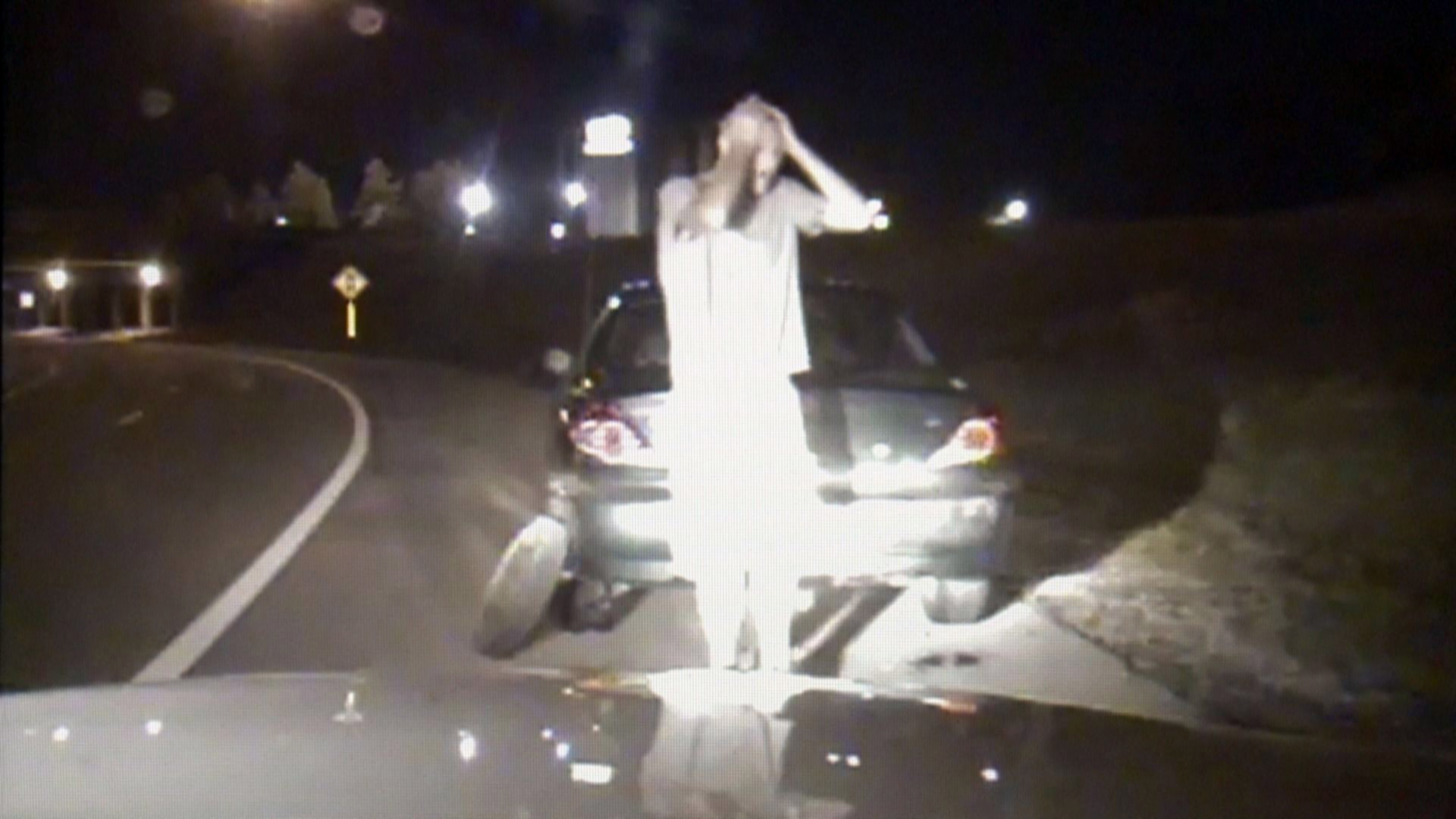(WBIR - KNOXVILLE) As national pressure mounts for law enforcement to utilize body cameras, the Knoxville Police Department has no plans to do so. The department currently faces two federal lawsuits stemming from violent encounters where most of the disputed actions take place out-of-view of dashboard cameras.
KPD uses dashboard cameras that can be manually started but also automatically begin recording full audio and video whenever an officer activates the cruiser's lights. Police also wear lavalier microphones that can be turned on and off by the officer.
KPD says the policy is for officers to have the microphone on whenever they are interacting with citizens, but they can turn the mics off when alone or only interacting with other law enforcement.
The microphones are actively recording audio during most of the videos KPD released Monday of two incidents in July 2014 that turned violent.
DEADLY OFFICER SHOOTING
One lawsuit is by the family of 45-year-old Ronald Carden, who was shot and killed by a KPD officer around 3:00 a.m. July 27, 2014. The dash-cam footage shows Officer David Gerlach stop to assist Carden and another man, Nicholas Thomas, with a flat tire near West Hills. Carden politely declines help and Gerlach begins to drive away when KPD said the results of a license plate check showed the tag was stolen. The video shows Gerlach park again, call Carden over in front of the cruiser, and radio the vehicle's details while beginning to grab Carden's sleeve. That's when Carden throws two hard punches at the officer and both run out of view of the camera.
The dashboard camera records the officer's audio, but the KPD account of what is happening off-screen is much different than the claims made in the lawsuit. KPD said the two men wrestled, a taser was deployed with no effect, and Carden was on top of the officer attempting to get his gun. KPD said Carden pulled at the gun with enough force to tear the leather holster when Officer Gerlach gained control of the weapon and fired.
The lawsuit claims Carden and Gerlach wrestled, but "Mr. Carden disengaged from Defendant Gerlach, stood up, and turned his back" and was shot "in the back, twice." The lawsuit claims Carden was "lying motionless face down on the ground when Defendant Gerlach stood up and shot him four more times."
The audio from the dashboard camera proves Gerlach rapid-fired five shots within a span of two seconds, clearly discrediting some of the lawsuit's claims. A body camera may not have provided a better account of the two men wrestling in the dark morning hours, but the devices can provide a more effective set of eyes than dash-cams in other situations.
NO REAR VIEW
A federal lawsuit filed by Ernesto Rodriguez claims on the morning of July 9, 2014, that Knoxville police officers beat the unarmed man unconscious and fractured his face so severely he required a breathing tube. KPD said the officers who responded to the domestic assault call acted appropriately and used justifiable force when subduing and handcuffing Rodriguez.
The tale of the tape is difficult to decipher because most of the initial encounter occurs at the rear of Officer Fred Kimber's cruiser. Kimber is heard repeatedly demanding Rodriguez's hand to be handcuffed while the Mexican immigrant refuses and stalls by saying "I'm about to" and "Look what you're doing to my hand." The lawsuit claims Kimber's handcuffs were too small and injuring Rodriguez's wrists.
While dash-cam video shows a rain-soaked windshield, audio records Kimber at the rear of the vehicle explain to other officers after the altercation, "I was getting ready to cuff him he tried to elbow me and then took a swing at me" in the time before backup arrived.
Officer Tom Thurman was the first officer to assist Kimber. Thurman's dash camera shows at the point he arrived, Kimber had Rodriguez standing upright and leaning forward against the trunk of the cruiser with his left arm behind his back, unable to reach Rodriguez's right hand. Thurman immediately grabs Rodriguez, shouts for him to "get your hands behind you," and then pounds Rodriguez with four right-handed blows. Rodriguez begins screaming hysterically, then Thurman strikes Rodriguez twice with his right knee as all of the men move out of the camera's view.
The lawsuit claims the beating Rodriguez took caused his facial fractures. KPD says the injuries occurred when Rodriguez was tackled and his face hit the street, not as a result of Thurman's punches. Furthermore, KPD contends Thurman did not punch Rodriguez in the face. The police say Thurman delivered palm-strikes to Rodriguez's shoulder blade, a technique they claim is taught to law enforcement to subdue a subject.
The video shows four forceful arm swings by Thurman, but his hand goes out of view just before the blows connect. The footage does not clearly show where he hits Rodriguez.
CHOOSE YOUR PRICEY PERSPECTIVE
Body cameras are an expensive investment. KPD estimates the front-end cost would exceed $1 million to purchase, cost $500,000 to operate annually, and then have to be replaced every five years.
For many agencies that have adopted the use of body cameras, the new gadgets come at the expense of existing devices. For example, the Knox County Sheriff's Office is embracing the use of body cameras by investing $1.3 million to purchase 600 of the devices in the next five years. However, KCSO is simultaneously phasing out its dashboard camera systems. In cases such as these, the body cameras would provide a different perspective rather than a true "extra set of eyes."
President Obama has pushed for federal funding to assist law enforcement with the cost. The president wants to buy 50,000 body cameras for police officers nationwide.
CAMERA PRIVACY CONCERNS
Knoxville Police Department spokesperson Darrell DeBusk said the department does not oppose the use of body cameras by law enforcement. However, he stated there is a misconception by many who believe the cameras will be the "fix of all fixes."
KPD said it was unable to provide an on-camera interview on Tuesday with Chief David Rausch because he is named as a party in the pending lawsuits. However, Rausch has repeatedly expressed concerns about body cameras violating citizens' privacy.
"Until the Legislature makes a move towards changing our privacy laws, I have a concern about body cameras. If I'm called to a residence and I go in that residence with that camera on, everything in that residence is being videoed," said Rausch during a 10News interview on March 12, 2015. "In Tennessee, all of this video is open to public record. As we enter a home and we've got that video rolling, we are now rolling on everything that goes on inside that home. The question then becomes do we want that video available to everyone in our community?"
For now the Knoxville Police Department will continue the use of dash-cams that automatically record when the police lights are activated and capture audio with microphones that officers can turn off.
All four of the officers named in the lawsuits remain on the job as active patrolmen for the Knoxville Police Department. KPD determined all of the officers acted appropriately in their response to the events now subject to the federal lawsuits.


